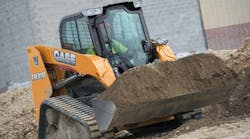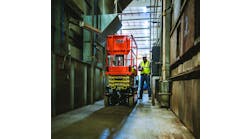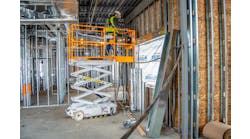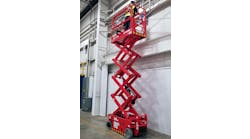Ken Simonson, chief economist for the Associated General Contractors of America, expects a strong 2016 in most construction segments.
RER: What is your expectation for the U.S. economy in 2016 in broad general terms?
Simonson: I expect inflation-adjusted gross domestic product, or real GDP, to increase 2.5 percent to 3 percent. But if the past several years are any guide, there will be wide fluctuations from quarter to quarter.
What are your expectations for various construction segment?
At this time (Dec. 4), we have initial data on construction spending for October and employment for November, although the spending numbers in particular are sometimes revised substantially. It appears that spending for the year [2015] will be at least 10 percent greater than in 2014, with double-digit growth for both residential and private nonresidential spending and mid-single digit growth for public construction. Within those broad categories, most segments have done better than in 2014. I expect growth to slow a bit to a 6-to-10 percent range, with residential and private nonresidential construction still expanding at close to double-digit rates in 2016 but public construction leveling off.
Last year there was a trend in the residential area towards multi-family as opposed to single-family dwellings. Is that trend continuing?
Yes. Even though survey show millennials say they want to own single-family homes eventually, they either prefer to stay in cities, where the high cost of land dictates mainly multifamily construction, or they can’t qualify for a mortgage because of high student debt or other credit impairment.
Obviously low oil prices seriously dampened the oil and gas segment in 2015 and construction related to oilfield activity took a huge hit. How do you see this segment in 2016?
I doubt construction related to oil and gas fields or the industries that supply them, such as fracking sand or drilling pipe, will revive in 2016. But there will be plenty of construction “midstream” — oil and gas pipelines — and “downstream” — petrochemical plants, gas-fired power plants and liquefaction and export facilities for natural gas.
You at AGC have expressed a lot of concern about the lack of trained qualified workers in the construction sector. Is there a difficulty finding labor in general or is it more finding skilled and trained people?
So far, contractors have been able to hire a lot of workers. Construction employment increased by 259,000 or 4.2 percent from November 2014 to November 2015. That was more than double the rate of job growth throughout the economy. But the number of unemployed workers whose last job was in construction hit the lowest November level in 15 years, suggesting that the pool of experienced workers has nearly dried up. Contractors in all regions report difficulty filling nearly every type of craft position, as well as some salaried jobs such as project managers, supervisors and estimators.
How serious an issue is the lack of skilled workers in your opinion and what kind of impact could this have on the industry?
I think in 2016, there will be evidence of steeper pay increases and, perhaps, selective examples of projects delayed by lack of key personnel.
What can/should be done to remedy the lack of trained worker situation?
The industry has been working more closely with school districts and community colleges to revive or expand training programs. The word is slowly spreading that construction offers higher pay than many other industries as well as the opportunity to work with cool tools, like cutting-edge software and even drones and robots in some applications.
Recently there was a short-term transportation bill passed but you at AGC pointed out that it was short term, not really looking at a long-term solutions for U.S. infrastructure. What would you like to see done to address these concerns?
Finally, Congress has found a way to pass a relatively long-term bill, covering five years, with modest increases in funding for both highways and transit. That’s a start. It would be great if they would use the time to agree on truly long-term sources of adequate funding.
Does it being an election year dampen the economy?
No, there is no correlation between economic growth and the election cycle.
Any particular regions you believe will be strongest in the U.S.? Weak areas?
Oil-drilling areas such as parts of North Dakota and Louisiana will continue to retrench. Regions dependent on agriculture or mining will lag, as will locations tied to exports. But growth should be pretty widespread. Construction employment has been rising in recent months compared to year-earlier levels in 35 to 43 states, and the list should remain nearly as long in 2016.
Any expectations for Canada?
Canada will have a rough year, with low oil and agricultural prices.
Any thought about how the equipment rental industry will fare in 2016?
Contractors should be expanding their use of equipment to keep up strong project backlogs. Their financial condition and confidence level should be high enough to sustain more equipment purchasing. But equipment rental and leasing should keep pace with direct sales.









